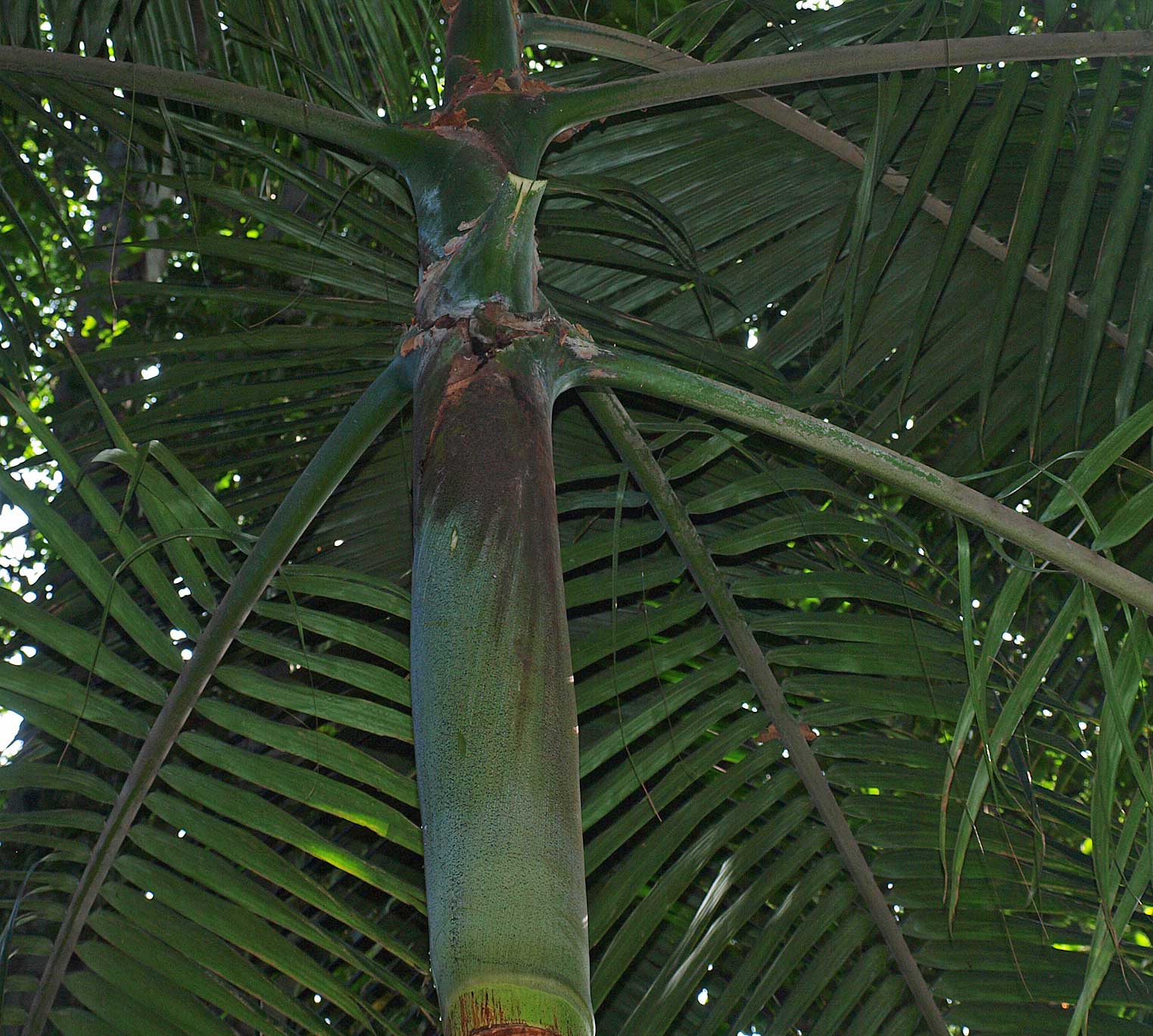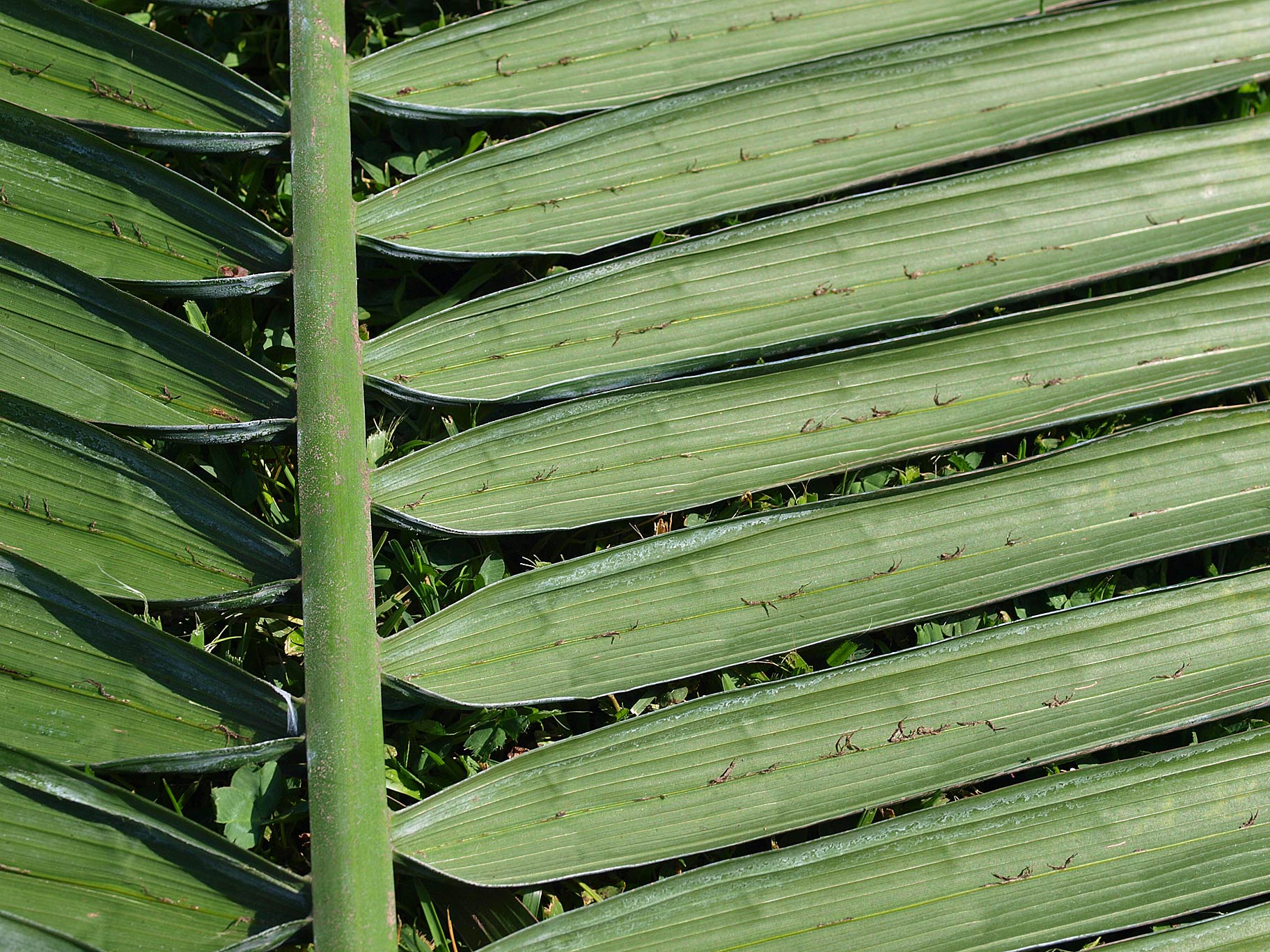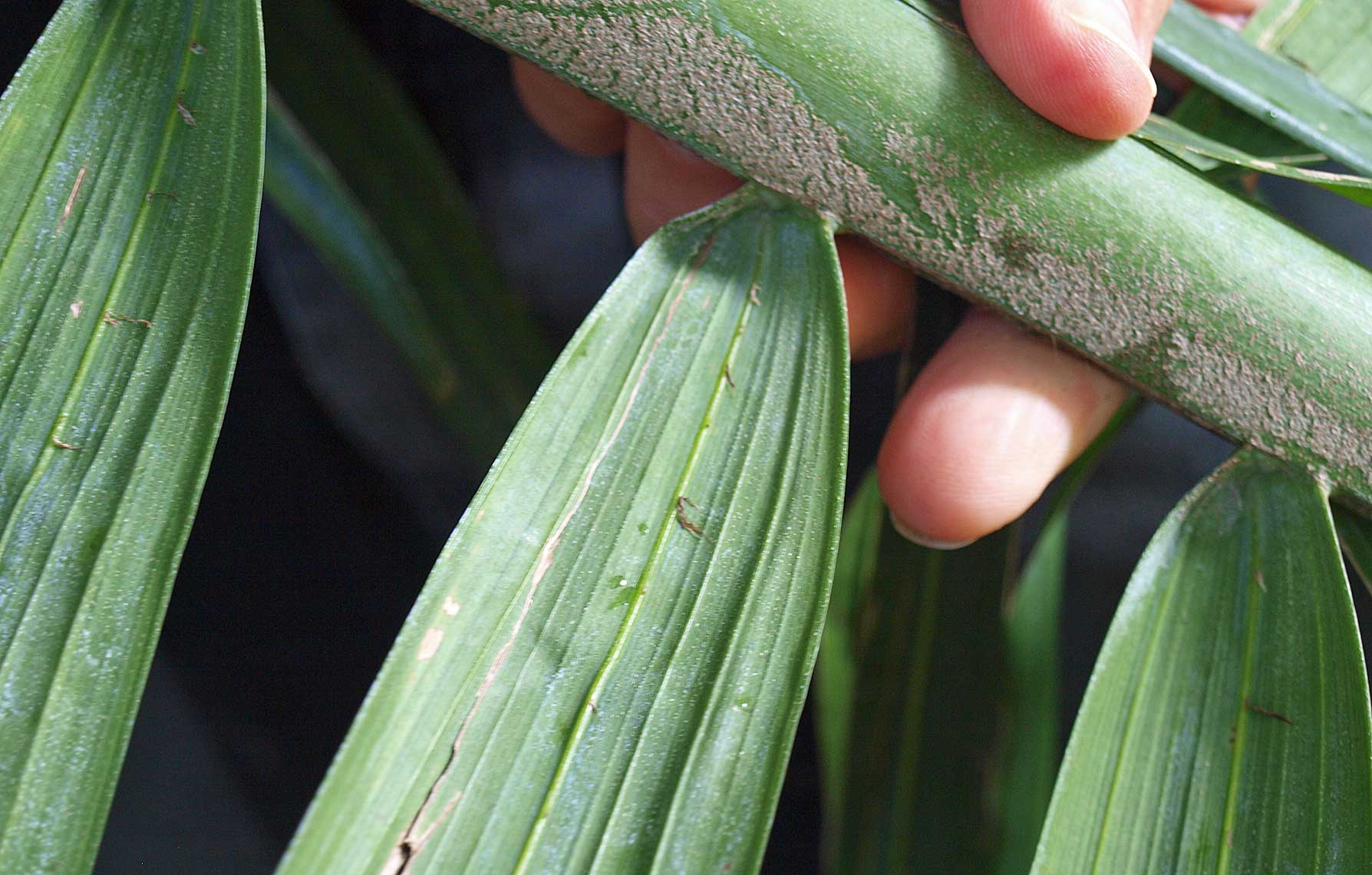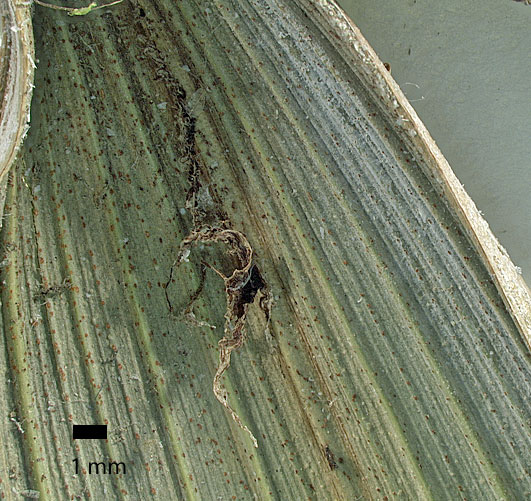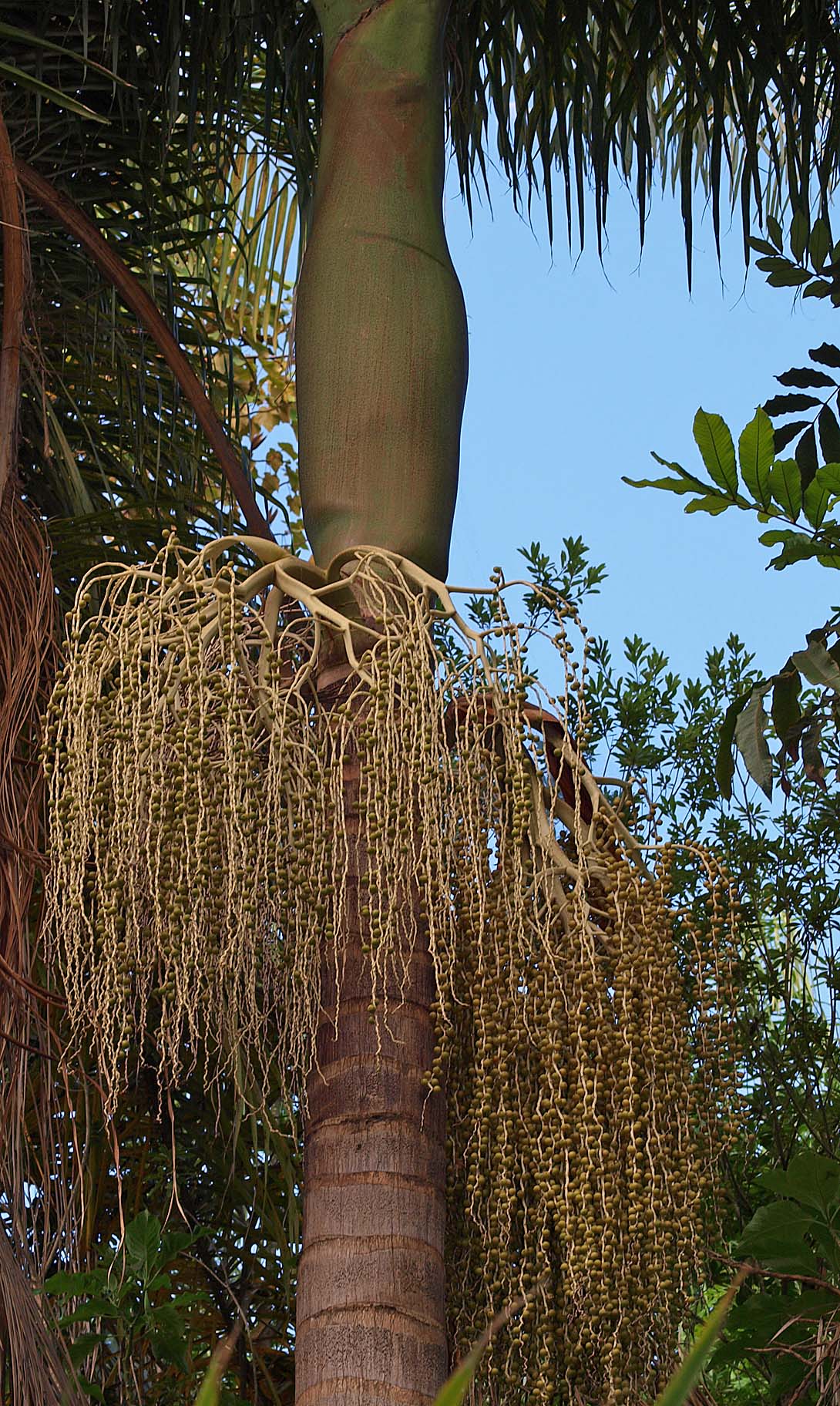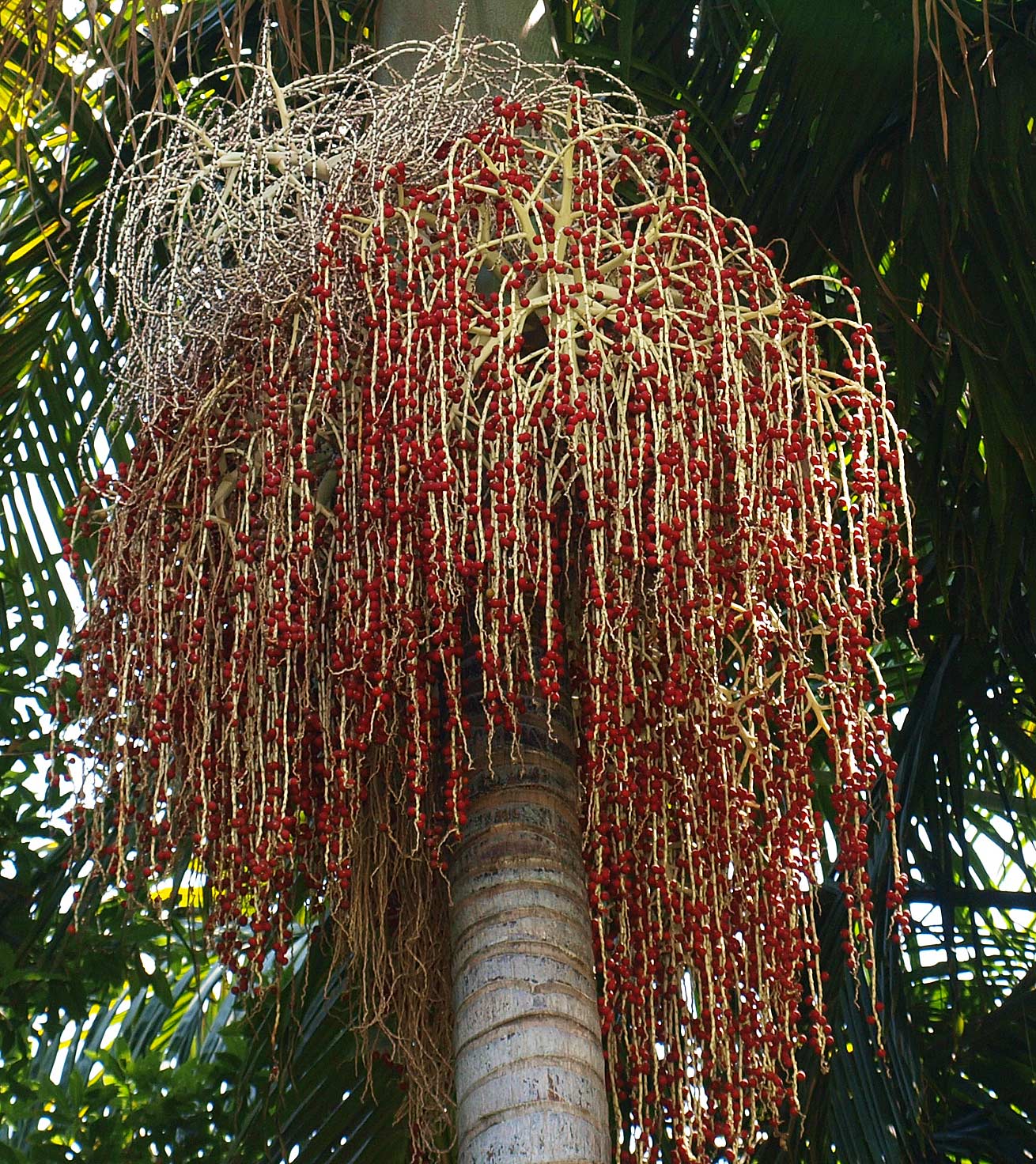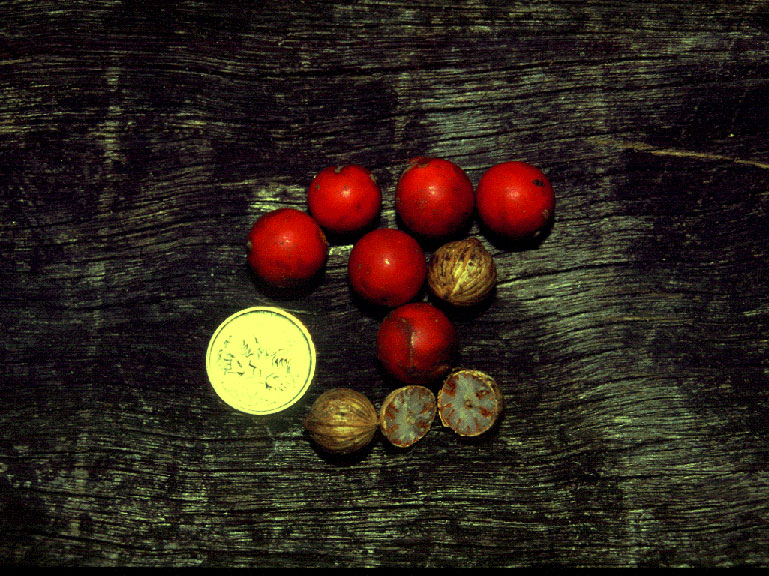Archontophoenix cunninghamiana
|
Archontophoenix cunninghamiana stems |
|
Archontophoenix cunninghamiana crown shaft |
|
Archontophoenix cunninghamiana leaflet undersurface with ramenta |
|
Archontophoenix cunninghamiana rachis with leaflet attachent |
|
Archontophoenix cunninghamiana leaflet undersurface with ramenta (dried specimen) |
|
Archontophoenix cunninghamiana leaflet undersurface with ramenta and scales (dried specimen) |
|
Archontophoenix cunninghamiana immature fruit |
|
Archontophoenix cunninghamiana fruit |
|
Archontophoenix cunninghamiana close view of fruit (MBC photo: 96217R1). Photograph courtesy of Montgomery Botanical Center http://www.montgomerybotanical.org/ |
Common name
piccabeen palm, bungalow palm
Description
Stems: Solitary, slender, gray, to 10 m tall and up to 20 cm in diameter, slightly swollen at the base, with ridged, "stair-step" rings of leafleaf:
in palms -- the leaf blade (which is usually divided into leaflets or leaf segments), the petiole (or leaf stalk) and the sheath (which forms the attachment of the leaf to the stem)
scars. Leaves: Pinnate, 2.5-3 m long, with drooping, linearlinear:
term to describe leaves and leaflets that are narrow with nearly parallel margins; like a line
leaflets growing in a single plane. The crown shaftcrown shaft:
a cylinder of clasping leaf sheaths toward the apex of the stem, found in some pinnate-leaved palms (e.g., <em>Wodyetia bifurcata</em>)
is up to 1 m long, somewhat swollen at the base, and varying in color from green to dull purplish-brown. Both upper and lower leaflet surfaces are green, and secondary veins are much less prominent than in A. alexandrae. The underside of the leaflet midrib is lined with brown ramentaramenta:
irregularly shaped, thin scales, sometimes found along the abaxial midrib of a leaflet
. Flowers and fruits: Inflorescenceinflorescence:
the reproductive structure of a flowering plant, including palms, consisting of flowers and associated bracts
about 1 m long with many pendulous branches. Male and female flowers are pink to lavender and are borne on the same inflorescenceinflorescence:
the reproductive structure of a flowering plant, including palms, consisting of flowers and associated bracts
. The red to pink, ovoid fruits are 1-1.5 cm long and have remnants of the stigma at the apex.
Diagnostic features
Field: Tall, solitary palms with slender crown shafts and stems with "stair step" leafleaf:
in palms -- the leaf blade (which is usually divided into leaflets or leaf segments), the petiole (or leaf stalk) and the sheath (which forms the attachment of the leaf to the stem)
scars and swollen bases. Leaves are green on both upper and lower surfaces. Multiple old and new inflorescences may remain on the stem and spiral around it.
Lab: Ramenta ramenta:
irregularly shaped, thin scales, sometimes found along the abaxial midrib of a leaflet
on the undersurface of leaflets, accompanied by tiny, brown scales
May be confused with
Archontophoenix alexandrae, which is taller, has a more swollen base, and has a silvery rather than green undersurface on the leaflets. The flowers of A. alexandrae are greenish-white to cream-colored, while those of A. cunninghamiana are pink to lavender.
Distribution
Native to Eastern Australia, often found in wet areas
Additional comments
Palms in this beautiful genus are used in landscaping, but they can be sensitive to the stresses of transplanting.
Scientific name
Archontophoenix cunninghamiana H.Wendl. & Drude
Family
Arecaceae/Palmae
Synonyms
Jessenia amazonum Drude
Loroma amethystina O.F. Cook
Loroma cunninghamiana (H. Wendl.) O. F. Cook
Ptychosperma cunninghamianum H.Wendl.



